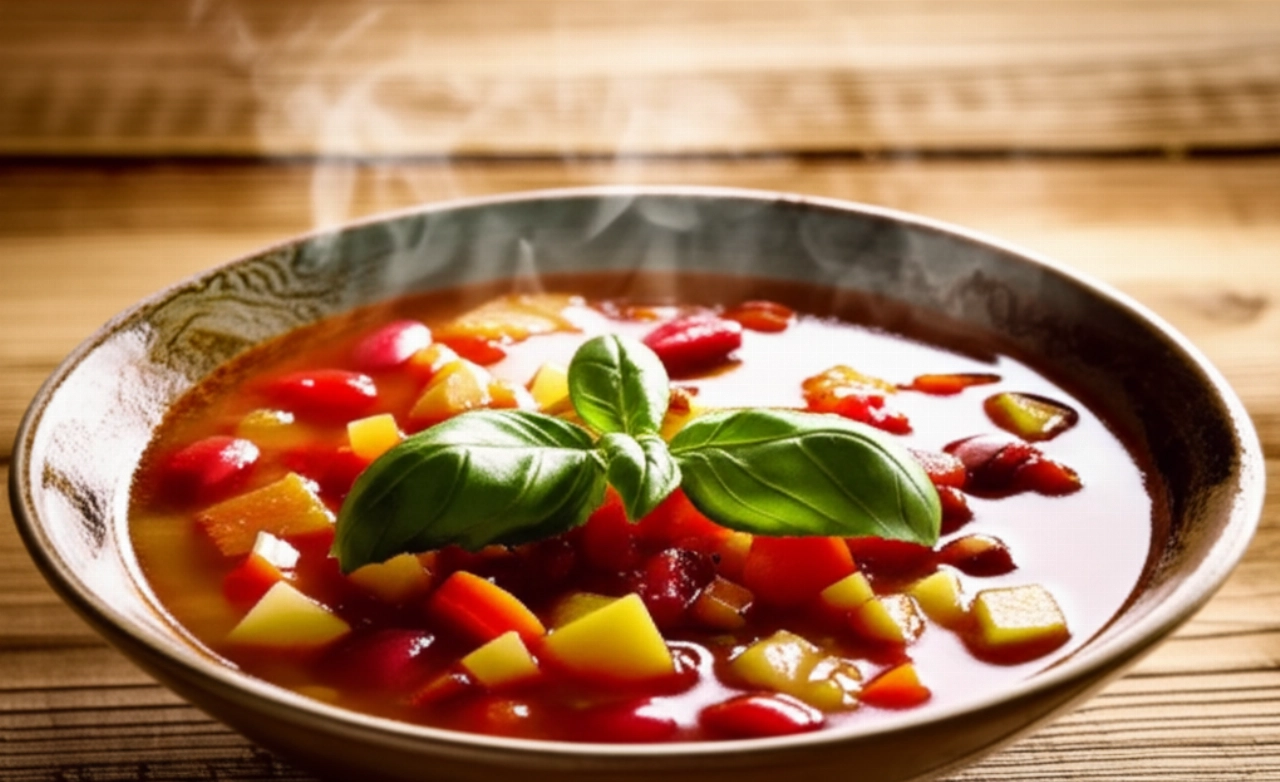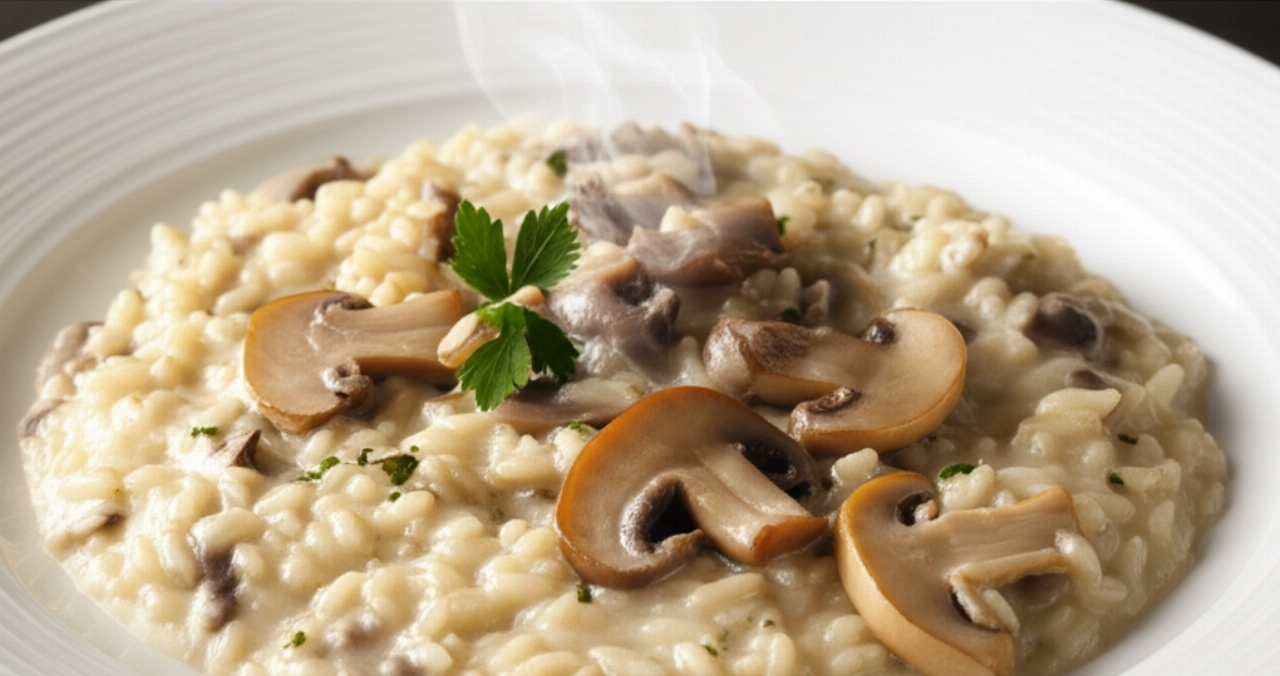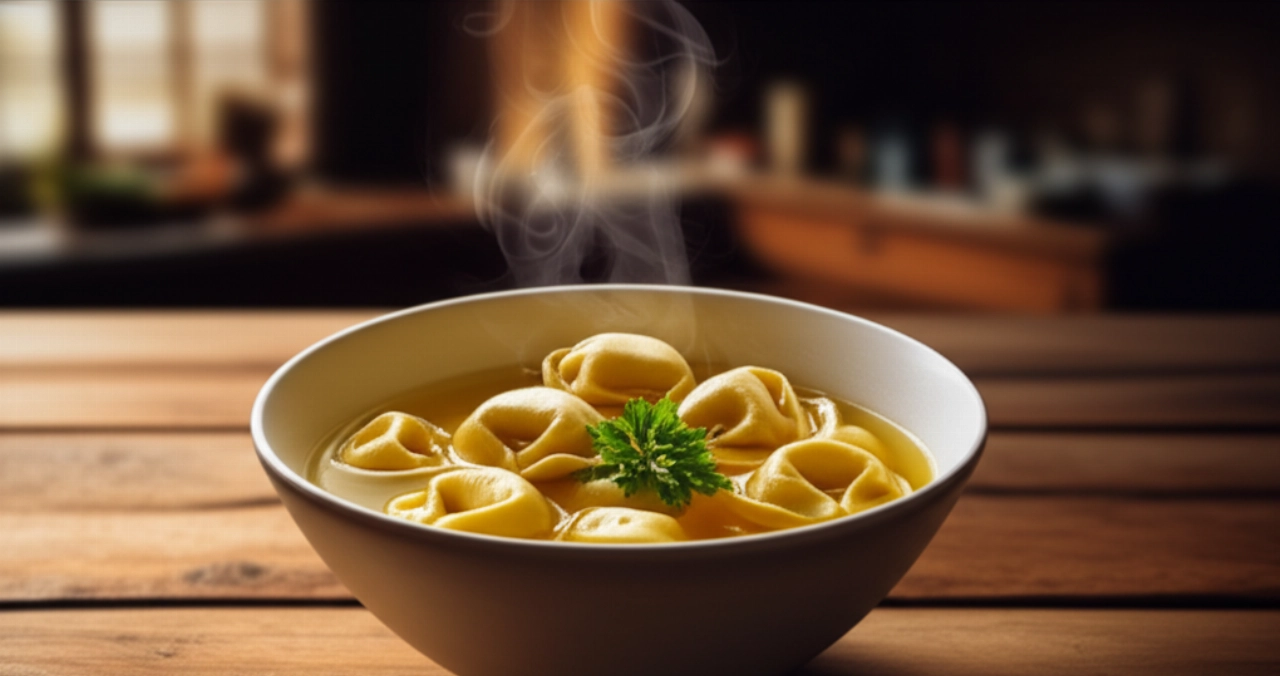Imagine the enveloping aroma that fills the kitchen, a symphony of fresh and natural scents promising warmth and flavor. This is the power of homemade vegetable broth, the true soul of countless dishes in our Italian tradition, from the creamiest risotto to the most comforting soup.
Too often, however, homemade broth turns out bland, watery, or, worse, one ends up resorting to industrial broth, giving up the depth of flavor and authenticity that only a broth prepared with love can provide. The fear of making mistakes, wasting precious ingredients, or simply the lack of clear guidance can discourage even the most willing.
Make yourself comfortable. On this page, you won't just find a list of ingredients, but the definitive guide, full of tricks and tips, to prepare the most flavorful, clear, and versatile vegetable broth you've ever tasted. Success is guaranteed, and your kitchen will never be the same. You'll feel at home, just like when grandma prepared her magical broth.
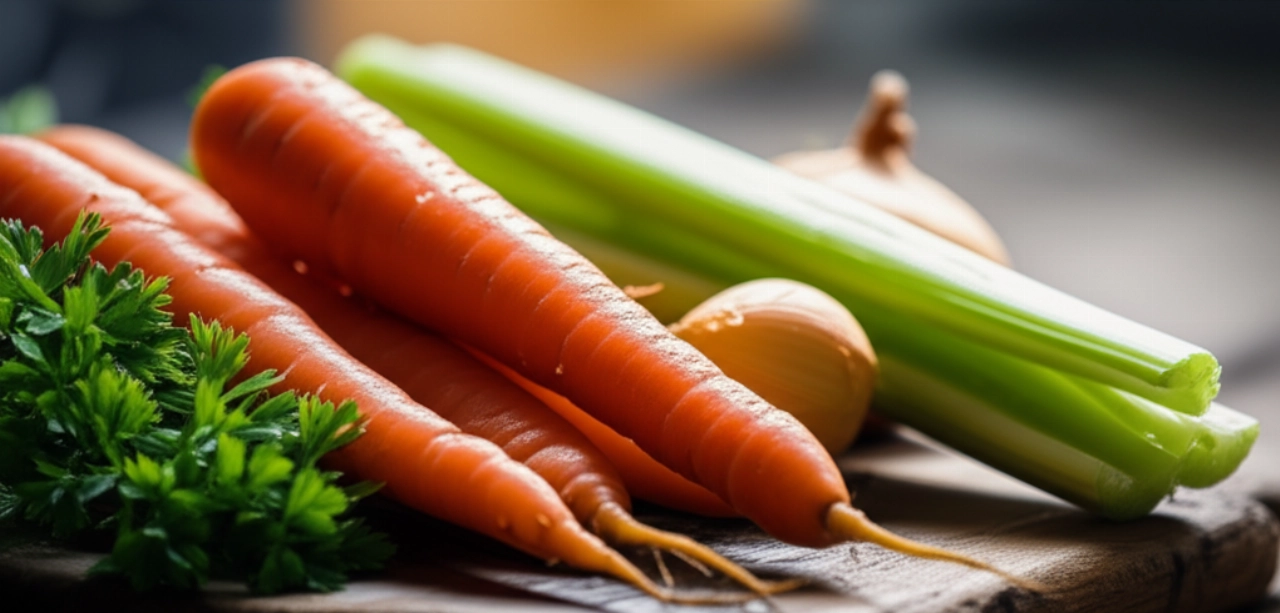
Homemade Vegetable Broth: The Ingredient Choice That Makes All the Difference
The secret to an excellent broth begins with the quality and combination of vegetables. It's not just about putting them in the pot, but about choosing the right ones and understanding their role. Here's what you need for a broth that tastes like home:
- Carrots: They add sweetness and a golden color. Choose them fresh and crisp.
- Celery: Provides an aromatic and slightly bitter note, essential for balance.
- Onion: The base of any good soffritto, it adds depth and an unmistakable aroma. You can leave it whole or cut it in half.
- Tomato (optional): A ripe tomato, even just half, adds acidity and a touch of color that makes the broth livelier.
- Potato (optional): A small potato, peeled and cut in half, helps to give body and to "bind" the flavors.
- Parsley: A few stalks, even if not the leaves, release a fresh and clean aroma.
- Coarse salt: Essential for enhancing the flavors of the vegetables.
- Cold water: Always cold! This allows the vegetables to gradually release all their aromas during heating.
- Peppercorns (optional): For an extra aromatic touch.
Remember: freshness is everything. Seasonal vegetables, perhaps organic, will make a difference in the final taste of your broth.
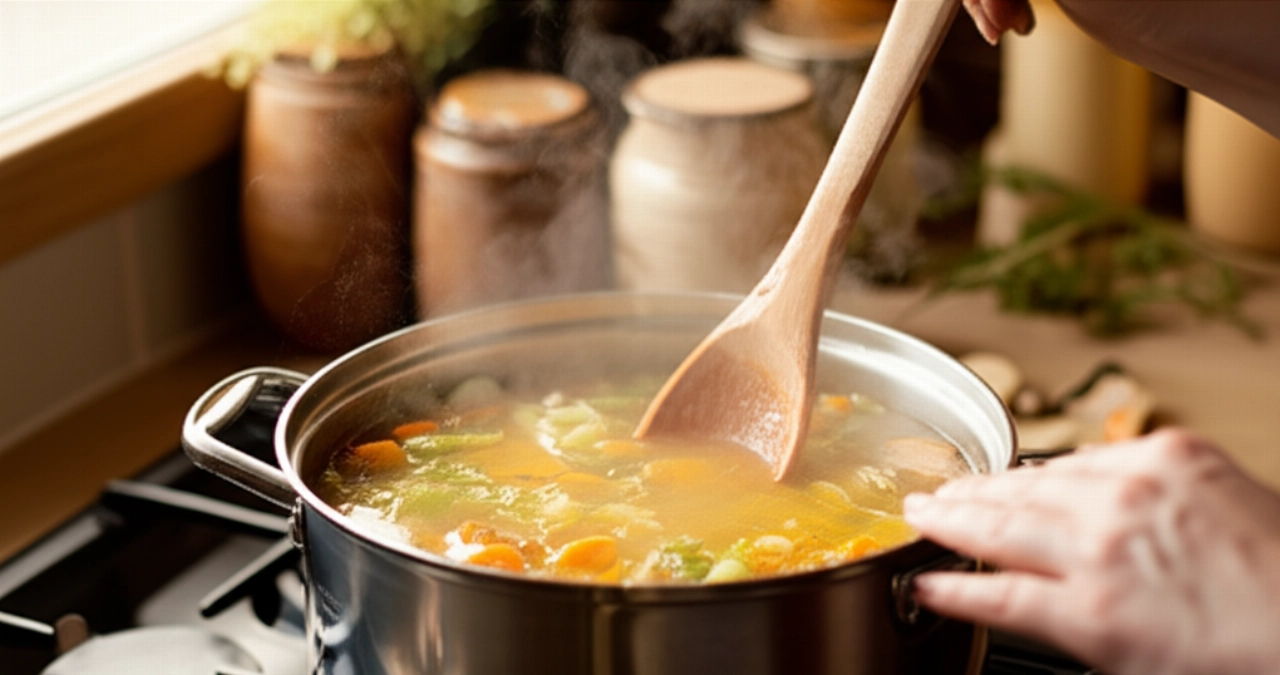
The 3 Common Mistakes That Make Broth Bland (and How to Avoid Them)
Don't worry, it's normal to have doubts! But with these tips, you'll avoid the most common pitfalls that turn a potential masterpiece into a forgettable broth. My experience has taught me that just a few precautions are enough for an impeccable result:
- Too much water or too few vegetables: The broth shouldn't be dirty water! Proportion is key. If you put too much water relative to the vegetables, the flavor will be diluted. Don't be afraid to fill the pot with vegetables; they are the stars.
- Too short or too violent cooking: Broth requires time and patience. Cooking on too high a heat will evaporate the liquids too quickly and won't allow the vegetables to release all their aromas. It should simmer gently, almost imperceptibly, for at least an hour and a half, preferably two.
- Not toasting the vegetables (or not skimming): This is a chef's trick! Lightly toasting the vegetables in the pot before adding water intensifies their flavors. And don't forget to skim: impurities that float to the surface must be removed for a clear and clean broth.
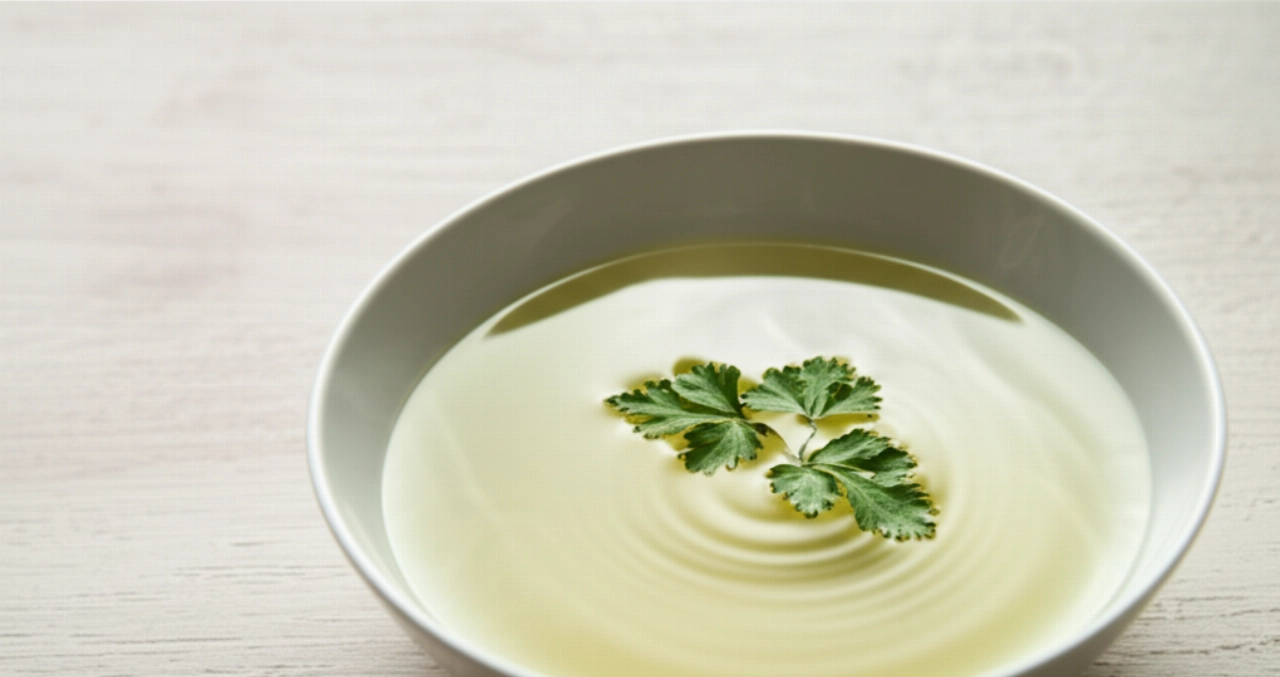
Grandma's Secret: That Extra Touch for a Chef-Quality Broth
My grandma always said that broth is the soul of the kitchen, the base upon which to build every masterpiece. And she had a little secret to make it even more special, a trick few know and which I'm happy to reveal to you:
In addition to lightly toasting the vegetables in a drizzle of olive oil before adding water (a step that concentrates flavors and gives a more intense color), grandma always added a Parmigiano Reggiano rind clean and well-washed. You won't believe it, but this small addition releases incredible umami, a depth of flavor that elevates the broth to a higher level, without making it "cheesy." Try it, and you won't go back!
Let's Prepare Your Perfect Vegetable Broth Together: The Step-by-Step Guide
Ingredients:
- 2 medium carrots
- 2 celery stalks
- 1 large onion
- 1 ripe tomato (optional)
- 1 small potato (optional)
- A few parsley stalks
- 2 liters of cold water
- 1 teaspoon coarse salt
- A few black peppercorns (optional)
- 1 Parmigiano Reggiano rind (well cleaned, optional)
- A drizzle of extra virgin olive oil (for toasting, optional)
Tools:
- A large pot (at least 4-5 liters)
- A fine-mesh sieve or cheesecloth for straining
- A ladle
Instructions:
- Prepare the vegetables: Wash carrots, celery, and tomato thoroughly. Peel the carrots and potato. Cut the carrots and celery into coarse pieces. You can leave the onion whole or cut it in half. Cut the tomato and potato in half.
- Toast (optional, but recommended): In a large pot, heat a drizzle of olive oil. Add the prepared vegetables (carrots, celery, onion, tomato, potato) and sauté over medium heat for 5-7 minutes, stirring occasionally, until they have a slight golden color. This step intensifies the flavor.
- Add water and aromatics: Pour cold water over the vegetables. Add the coarse salt, parsley stalks, peppercorns, and Parmigiano rind (if using).
- Bring to a boil and skim: Bring slowly to a boil. As soon as it starts boiling, lower the heat to minimum. You will see foam rise to the surface: remove it gently with a ladle or skimmer. This step is crucial for a clear broth.
- Slow cooking: Cover the pot with a lid (leaving a small gap) and let it simmer gently for at least 1 and a half hours, preferably 2 hours. The longer it simmers over low heat, the more flavorful the broth will be.
- Strain the broth: Once ready, turn off the heat. Strain the broth through a fine-mesh sieve, or even better, through a clean cheesecloth placed inside the sieve. Lightly press the vegetables to extract all the liquid, but without pressing them too much to avoid clouding the broth.
- Store: Let the broth cool completely before storing it in airtight containers in the refrigerator or freezing it.
Tips and Frequently Asked Questions about Vegetable Broth
I know you might still have some questions, and that's perfectly fine! Here are the answers to the most common doubts, to guarantee you a flawless success:
- Can I add other vegetables or scraps?
- Certainly! You can add zucchini, leeks, fennel, or even the tougher outer parts of lettuce. The important thing is that they are fresh vegetables and not too bitter. Avoid vegetables like cabbage or broccoli, which might give a too strong or unpleasant flavor to the broth.
- How long can I store the broth in the refrigerator?
- Vegetable broth can be stored in the refrigerator, in an airtight container, for 3-4 days. Make sure it is completely cold before storing it.
- How can I freeze the broth?
- Freezing broth is a great idea to always have it ready! Once cold, you can pour it into food containers, freezer bags, or, for smaller portions, into ice cube trays. Once frozen, you can transfer the cubes to a bag. It keeps in the freezer for about 3 months.
- Should salt be added immediately or at the end?
- It's best to add coarse salt at the beginning of cooking. This allows the vegetables to release their flavors more effectively. You can always adjust the salt at the end, if necessary, but starting with a salted base helps with flavor extraction.
- Why is my broth cloudy?
- A cloudy broth can depend on several factors: cooking too violently (it should simmer gently), not skimming the initial impurities, or pressing the vegetables too much during straining. Remember: patience and delicacy are the keys to a clear broth.
There you have it! Now you hold not just a recipe, but all the secrets to bring to the table a vegetable broth that tastes of home, tradition, and love. It's the perfect base for creamy risottos, comforting soups, nutritious stews, and for adding an extra touch to any dish.
Don't be afraid to experiment. Cooking is an act of creativity, and broth is your blank canvas. But start with this solid base, and you'll see that applause won't be lacking. It will be your secret for healthier, more flavorful, and authentic cooking.
Have you prepared your vegetable broth following our tips? We're very curious to know how it went! Leave a comment below, tell us about your experience, or share a photo on Instagram by tagging @CercaRicette.it. And if you loved this recipe, don't miss our guide on how to make a perfect risotto or the recipe for a grandma's vegetable soup that will warm your heart.


